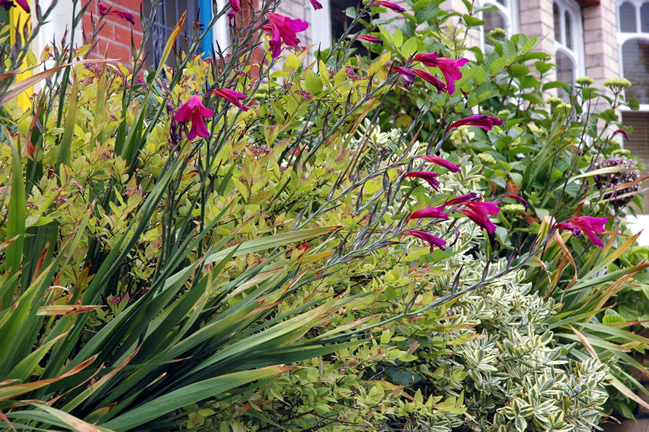
Bulbs, Perennials > Gladiolus > Gladiolus communis > Gladiolus communis subsp. byzantinus
Gladiolus communis
ssp. byzantinus
Gladiolus
Origin: Eurasia, north-west Africa and Morroco, the Maltese islands and the Mediterranean region. Introduced into cultivation in 1576.
| Family |
| Iridaceae |
| Genus |
| Gladiolus |
| Species |
| communis |
| Category |
| Bulbs, Perennials |
| Subspecies |
| byzantinus |
| USDA Hardiness Zone |
| 6 |
| Canadian Hardiness Zone |
| 5a - 6a |
| RHS Hardiness Zone |
| H5 |
| Temperature (°C) |
| -21 -(-18) |
| Temperature (°F) |
| -5 - 0 |
| Height |
| 50 -100 cm |
| Spread |
| 10 cm |
Photographs
Description and Growing Information
Flowering Period
| General Description |
| Cormous perennial with sword-shaped leaves. It rarely sets viable seed since it is a hexaploid (90 chromosomes) and is thus usually infertile, although at times it may appear that seed capsules are ripe. All of the plants in the United Kingdom are theorized to be one identical clone propagated by cormlets. |
| Landscape |
| Cottage and informal gardens. |
| Cultivation |
| Prefers a sunny disposition with free draining soil. Plants corms in the autumn for late spring blooms. Corms are frost intolerant. |
| Growth |
| Fast |
| ID Characteristic |
| Often confused with G. italics, this species has wider, lance-like leaves and the flowers lack side tepals. |
| Pests |
| Thrips, aphids and slugs. |
| Flower Description |
| Flower colour in Africa and Morocco are typically dark red while those plants found growing in the Mediterranean are paler in colour, while white forms have been found in the Maltese Islands. There may be up to 21 flowers on a spike, with white darts on the lower petals. |
| Propagation |
| Separating cormlets when dormant. |

.jpg)
